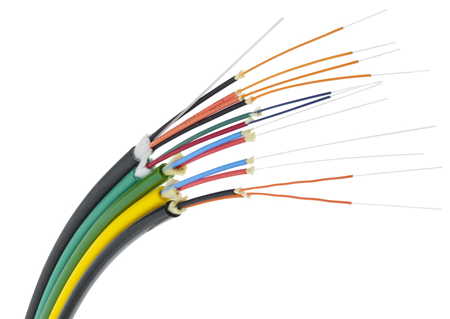
Optic fibres are generally known for transmitting communication signals over thin strands of plastic. This technology isn’t new since the idea was formulated over one century ago and has been in commercial use for at least 25 years. The very first commercial optic fibre installation was made for a telephone system in 1976 in Chicago. By the early 80s, the first long distance telephone networks were operational. By the middle of 1980s, most of the basic, modern fibre technology was developed and installed in the communications grid that today handles virtually all telecommunications that are long distance.
The Technological benefit of optical fibres – A tiny strand of optical fibre can carry more communication signals than copper cables over longer distances. For example, cooper cables with about one thousand pairs of conductors can carry about 24 conversations by telephone (a distance of less than 5 kilometers). Thinner fibre optic cables can carry over 32,000 conversations, hundreds and even thousands of kilometers. Because of this, the cost of sending phone signals via copper is 100 times higher than the cost of transmitting the signal via fibre cables.
Optic fibres applications – Fibre optics are often used in many non-communications applications as well, including visual inspection, sensors, signs and lighting. However, the main focus is on data communications applications, containing internet connections, cable TV, telephony, local area networks, control and industrial communications, intrusion and alarms sensors, closed circuit video monitoring and multiple other uses. This technology has made important inroads into many of these applications. It is present in video surveillance networks, majority of cable TV networks and most computer network backbone and in over 90 percent of all long distance and in over 50 percent of all local telephone systems.
The benefits of fibre optic cables – Very simple, optic fibre technology can transmit more information in lest time over long distance than any other data transport medium. Here are the benefits of fibre optics:
- Faster data speeds
- Lower costs
- Lower weight
- Longer distances
- Smaller size
- No electromagnetic radiation interference
- Improved security
- Electrical isolation.
Fibre optic cables enclose up to 1000 optical fibres to protect them against different environmental conditions in which cables operate. The outside of the cables is known as ‘jacket’. It’s the final protection layer for the optic fibres and is made to withstand any extremes of moisture, temperature and the potential stress of installation. There are certain cables that under the jacket have a layer of thin metal in order to keep rodents from chewing through the optic cable. The fibre optic cables industry is fast-growing and dynamic because it provide so many benefits over other methods of data transmission.
























